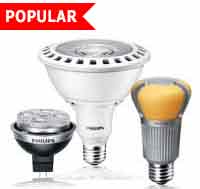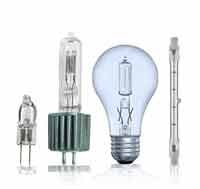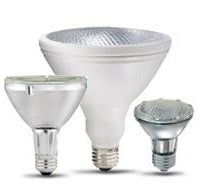An Introduction to Dimmer Packs
An Introduction to Dimmer Packs
 Dimmer packs are a key component to any lighting system. The dimmer pack is a series of dimmers that lowers and raises the voltage allotted to a particular light source, thus raising and dimming the light source. It is important to realize that dimmers do not dim lights by themselves, they must be controlled by a console. All dimmer packs, whether portable, lightbar, or rack-mounted share basic features. All dimmer packs have outputs, or outlets that power the fixtures they are dimming. The most common output is the Edison dual socket. Dimmer packs have a specific number of channels, of which correspond to a specific piece of lighting equipment. All dimmer packs have a maximum wattage per channel. For portable dimmer packs, the typical per-channel wattage is either 600w or 1,200w. In order to protect the lights and the dimmer pack from short circuits and irregularities in electrical flow, all dimmer packs are outfitted with fuses or circuit breakers to safeguard the lighting system. The more complex dimmer packs have multiple output options, the Lightronics R-series rack-mounted dimmer pack has the option of Edison dual sockets, terminal strips, a patchbay, or two socapex outputs. Some dimmer backs also have outputs for less conventional lighting options, like LED rope lights. All dimmer packs also have a male and female XLR jacks, or universes. The XLR jacks allow you establish a connection between the controller and the dimmer pack, or set up a daisy-chain of dimmer packs. In order for the dimmer pack to communicate with the controller or other dimmer packs, the dimmer pack will have either a DIP switch or an LED display and controls to designate which channel on the controller the dimmer pack will occupy or what position in the daisy chain the dimmer pack has.
Dimmer packs are a key component to any lighting system. The dimmer pack is a series of dimmers that lowers and raises the voltage allotted to a particular light source, thus raising and dimming the light source. It is important to realize that dimmers do not dim lights by themselves, they must be controlled by a console. All dimmer packs, whether portable, lightbar, or rack-mounted share basic features. All dimmer packs have outputs, or outlets that power the fixtures they are dimming. The most common output is the Edison dual socket. Dimmer packs have a specific number of channels, of which correspond to a specific piece of lighting equipment. All dimmer packs have a maximum wattage per channel. For portable dimmer packs, the typical per-channel wattage is either 600w or 1,200w. In order to protect the lights and the dimmer pack from short circuits and irregularities in electrical flow, all dimmer packs are outfitted with fuses or circuit breakers to safeguard the lighting system. The more complex dimmer packs have multiple output options, the Lightronics R-series rack-mounted dimmer pack has the option of Edison dual sockets, terminal strips, a patchbay, or two socapex outputs. Some dimmer backs also have outputs for less conventional lighting options, like LED rope lights. All dimmer packs also have a male and female XLR jacks, or universes. The XLR jacks allow you establish a connection between the controller and the dimmer pack, or set up a daisy-chain of dimmer packs. In order for the dimmer pack to communicate with the controller or other dimmer packs, the dimmer pack will have either a DIP switch or an LED display and controls to designate which channel on the controller the dimmer pack will occupy or what position in the daisy chain the dimmer pack has. 
Like theatre lighting technology at large, dimmer packs in the recent years have seen some remarkable technological innovations. Lightronics offers a wireless dimmer pack that replaces XLR wire connectivity with a wireless system in which the dimmer pack can communicate with the controller at up to 4,000ft feet away. Some dimmer packs also have more features directly on the dimmer pack itself including dimming curve selection and built in chases. The use of a LCD display in place of a DIP switch allows the dimmer packs to be more easily used and adapted to more purposes other than dimming.
Hopefully this article has given you the basic information to pick out the dimmer pack best for you. Be sure to check out our comprehensive dimmer pack offerings and packages today!













Stay in Touch